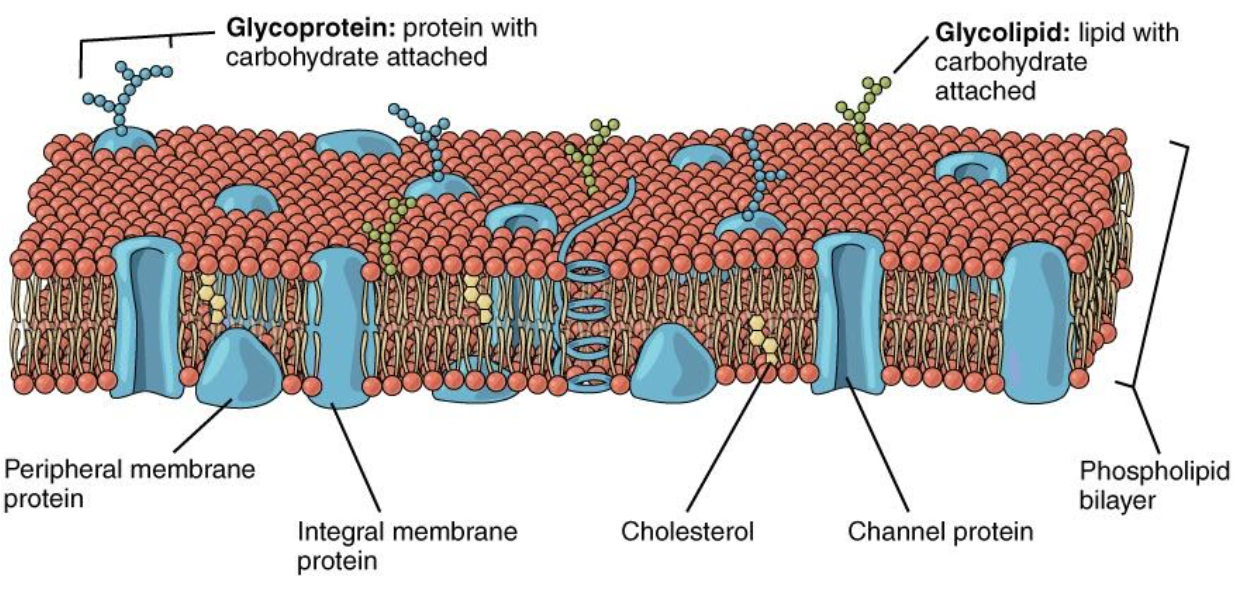
Describe the fluid mosaic model of plasma membrane.
Answer
466.2k+ views
Hint: In 1972, Singer and Nicolson proposed the fluid mosaic model, which is the most modernly developed bio-membrane model. The fluid mosaic model describes the structure of the plasma membrane as a mosaic of components.
Complete Answer:
According to the fluid mosaic model, the membrane does not bear a uniform and consistent disposition of proteins and lipids, however as an alternative it is a mosaic of both. Apart from this, the bilayer membrane is not concrete, but appears as quasi-fluid in nature. This quasi - fluid nature of the lipids facilitates tangential movement of the proteins inside the whole bilayer membrane.
The model representation has been provided below:

Furthermore, the quasi-fluid nature of the bilayer membranes are represented by their characteristics such as rapid repairing, vibrant nature, capability to combine, expand and squeeze, nurture during the cell development and cell segregation, endocytosis and development of the intercellular connections.
The Fluid-Mosaic model assumes that the lipid-based molecules are presented in a bilayer casing which has viscous properties as in the lamellar model. Moreover, the protein molecules arrive at the sites both at interior and exterior sides of the lipid-protein bilayer membranes. The interior proteins are referred as integral or intrinsic proteins whereas the exterior proteins are referred as peripheral or extrinsic proteins.
Note: The capability of the proteins to move laterally within the membrane is calculated as the fluidity of the system. The plasma membrane is mainly composed of lipids which are significantly prearranged in a bilayer membrane casing. The arrangement of the membrane is like that polar head of the lipid is faced towards the exterior side and its hydrophilic tail towards the interior side. Moreover, the plasma membrane has a major contribution of proteins 52% and lipids 40%.
Complete Answer:
According to the fluid mosaic model, the membrane does not bear a uniform and consistent disposition of proteins and lipids, however as an alternative it is a mosaic of both. Apart from this, the bilayer membrane is not concrete, but appears as quasi-fluid in nature. This quasi - fluid nature of the lipids facilitates tangential movement of the proteins inside the whole bilayer membrane.
The model representation has been provided below:

Furthermore, the quasi-fluid nature of the bilayer membranes are represented by their characteristics such as rapid repairing, vibrant nature, capability to combine, expand and squeeze, nurture during the cell development and cell segregation, endocytosis and development of the intercellular connections.
The Fluid-Mosaic model assumes that the lipid-based molecules are presented in a bilayer casing which has viscous properties as in the lamellar model. Moreover, the protein molecules arrive at the sites both at interior and exterior sides of the lipid-protein bilayer membranes. The interior proteins are referred as integral or intrinsic proteins whereas the exterior proteins are referred as peripheral or extrinsic proteins.
Note: The capability of the proteins to move laterally within the membrane is calculated as the fluidity of the system. The plasma membrane is mainly composed of lipids which are significantly prearranged in a bilayer membrane casing. The arrangement of the membrane is like that polar head of the lipid is faced towards the exterior side and its hydrophilic tail towards the interior side. Moreover, the plasma membrane has a major contribution of proteins 52% and lipids 40%.
Recently Updated Pages
The correct geometry and hybridization for XeF4 are class 11 chemistry CBSE

Water softening by Clarks process uses ACalcium bicarbonate class 11 chemistry CBSE

With reference to graphite and diamond which of the class 11 chemistry CBSE

A certain household has consumed 250 units of energy class 11 physics CBSE

The lightest metal known is A beryllium B lithium C class 11 chemistry CBSE

What is the formula mass of the iodine molecule class 11 chemistry CBSE

Trending doubts
State the laws of reflection of light

One Metric ton is equal to kg A 10000 B 1000 C 100 class 11 physics CBSE

Difference Between Prokaryotic Cells and Eukaryotic Cells

How do I convert ms to kmh Give an example class 11 physics CBSE

Give an example of a solid solution in which the solute class 11 chemistry CBSE

Describe the effects of the Second World War class 11 social science CBSE




